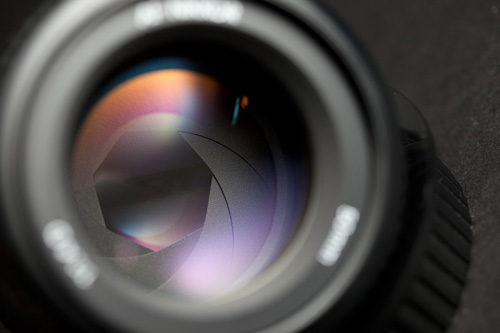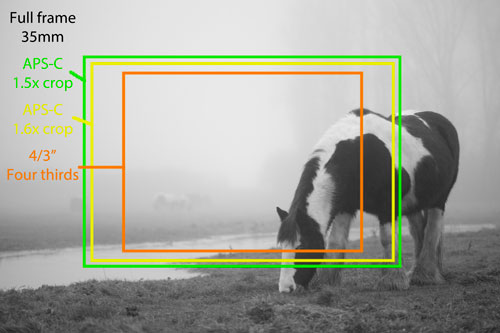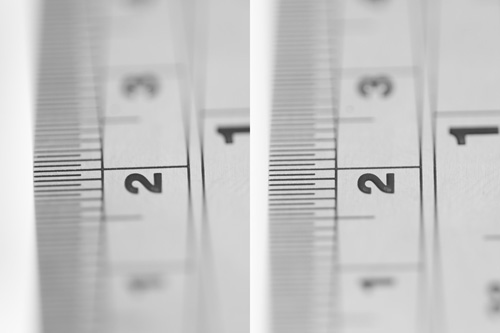What does Equivalent Aperture mean?
Something that you might come across when reading camera / lens reviews, or discussions, is talk about equivalent focal length and equivalent aperture. For example, a 50mm f/1.4 lens for a micro four thirds camera might be described as being a 100mm f/2.8 equivalent lens.
But what does this really mean? I have already discussed equivalent focal length in the article Photography Basics – Focal length, though I will cover it again very briefly in this article. But mostly I want to look at the idea of equivalent aperture, and how this relates to depth of field and the amount of light gathered.
Camera image sensor sizes tend to be compared to the size of a frame of film. They are given a Crop Factor to indicate how much smaller they are than a frame of film.
For example, micro four thirds cameras have a 2x crop factor. This means that the image sensor is twice as small (covers one quarter of the area) of a full frame camera's image sensor.
This results in a lens behaving as if it has twice the focal length. A 100mm lens mounted on a micro four thirds camera gives a field of view equivalent to a 200mm lens on a full frame camera.
Equivalent aperture and depth of field
Now, this is where the equivalent aperture bit comes in. For a given subject framing with a specific focal length, a crop camera user will have to stand further away from the subject than a full frame camera user. (Because the field of view is narrower for the crop camera user). The further away you are from your subject, the larger the area that will is in focus will be.
So the equivalent aperture for the 2x crop camera user is about 2 stops smaller than the full frame user. A 100mm f/5.6 lens acts like a 200mm f/11 lens (in terms of field of view and depth of field only) on the 2x crop camera.
The image above shows a comparison between a camera with an APS-C sized sensor on the right, and a camera with a full frame size sensor on the left. Both images were shot at 100mm f/2.8. The APS-C image has an equivalent aperture about 1 stop smaller, i.e. f/4. If you look at the number 1 near the front of the ruler and the number 3 near the back, you can see they are slightly more in focus in the APS-C image thanks to this smaller equivalent aperture.
In the above image the APS-C image was taken with the camera further away from the ruler (actually the ruler was moved further away from the camera). If I had kept the camera / ruler in the same position for both shots, but used a shorter focal length lens on the APS-C camera (65mm on APS-C would be approximately equal to 100mm on full frame), the result would still be the same thanks to the wider angle lens.
Note that the difference in depth of field between the images is very small. I did try to take some real world images to demonstrate the difference, but the difference was so small I had to go with the close-up of a ruler to make the difference visible. However when there is a large difference in image sensor sizes, then a difference can become easily visible:

Top half full frame sensor camera, bottom half 1/2.5" sensor camera
Equivalent aperture and amount of light gathered
So, how does equivalent aperture affect the light gathering ability of a lens? This is a tricky question, equivalent aperture does relate to the total amount of light that will be captured by the camera's image sensor. But it is not actually very useful in determining how well a lens / sensor combination will work in low light.
The image above shows an example of the image circle cast by a lens, and the different sensor sizes. You can easily see that the larger a sensor, the larger the amount of light that will be gathered.
Now, although a larger sensor gathers more light, it is important to note that this only affects the noise levels of the image. The exposure of an image will be same for a given real aperture no matter what size sensor camera it is used with.
Because a larger sensor gathers more light altogether, it has a higher signal to noise ratio, which results in less noise. (Read Photography Basics - ISO for more information on this). So, the larger the image sensor, the higher the ISO setting you can afford to use without getting noisy images.
In theory then, equivalent aperture holds up in terms of the light gathering ability of a lens. A 50mm f/2.8 lens used a micro four thirds camera set to ISO 100 is equivalent to a 100mm f/5.6 lens used on a full frame camera at ISO400. The field of view will be the same, the depth of field will be the same, and the image noise levels will be the same, in theory.
But in reality this breaks down, as image noise levels are not dependent only on the amount of light gathered by the sensor. The technology used in the sensor is just as, or sometimes more important.
A camera with a smaller image sensor might have exactly the same levels of image noise as a camera with a larger image sensor. Or it might have significantly worse image noise. Sensor size is a factor in determining image noise, but is not the only determinant.
For example, see this comparison between the Olympus OM-D E-M5, Canon 5D MkII, and Panasonic GF1 camera. At ISO3200, the Olympus and Canon cameras have roughly the same noise levels, despite the Canon camera having a larger image sensor. The Panasonic camera has much worse noise levels, even though it's sensor is the same size as the Olympus'. Technology is making more of a difference in the noise levels between the cameras than the image sensor size.
So, comparing a lens by equivalent focal length makes sense. Comparing a lens by equivalent aperture in terms of depth of field makes sense. Comparing a lens by equivalent aperture in terms of light gathered might be sound in theory, but does not make sense in real life.









Very clear and useful explanation, thanks!
One thing missing: pixel density/pixel pitch/pixel size.
–Are you assuming the same number of MP for each camera?
–Or are you assuming the same pixel size/density/pitch for each camera?
–Or none of the above?
Hi DR Win
The answer would be ‘none of the above’. The pixel pitch does not affect effective aperture at all. A 10MP full frame sensor will have the same amount of depth of field and total light gathering ability as a 38MP full frame sensor.
Similarly, a full frame sensor will have about 1 stop less depth of field and 1 stop more light gathering ability than an APS-C sensor. This is true whether the full frame sensor is 10MP and the APS-C sensor is 24MP, they both were 10MP or 24MP, or the full frame was 24MP and the APS-C was 10MP, or any other value you choose!
Where pixel pitch comes into play is the amount of noise when the image is viewed at 100% magnification, and also when diffraction starts to become visible when the image is viewed at 100%. The smaller the pixel pitch, the less light each pixel gets and so the more noise you’ll see at 100%. The total area of the sensor gets roughly the same amount of light though, no matter what the pixel pitch is.*
Dave
*The smaller the pixel pitch, the larger in relative terms any gaps between the pixels are, making the sensor less efficient. So technically you could say that the smaller the pixel pitch, the less light a sensor will receive overall. But this generally doesn’t make much difference except at very high ISOs in low light as these gaps are so tiny anyway.
Right. But you spoke also of noise levels. This is often considered to be related to pixel density (all other things being equal). So 16mp crammed onto a P&S-type sensor would be expected to generate far more noise (or, more accurately, far lower S/N ratio) than 16mp on a 4/3 or APS-C or FF camera.
cancel that; you addressed it.
Thank You Sir.